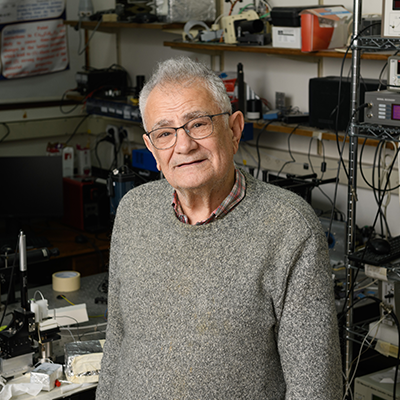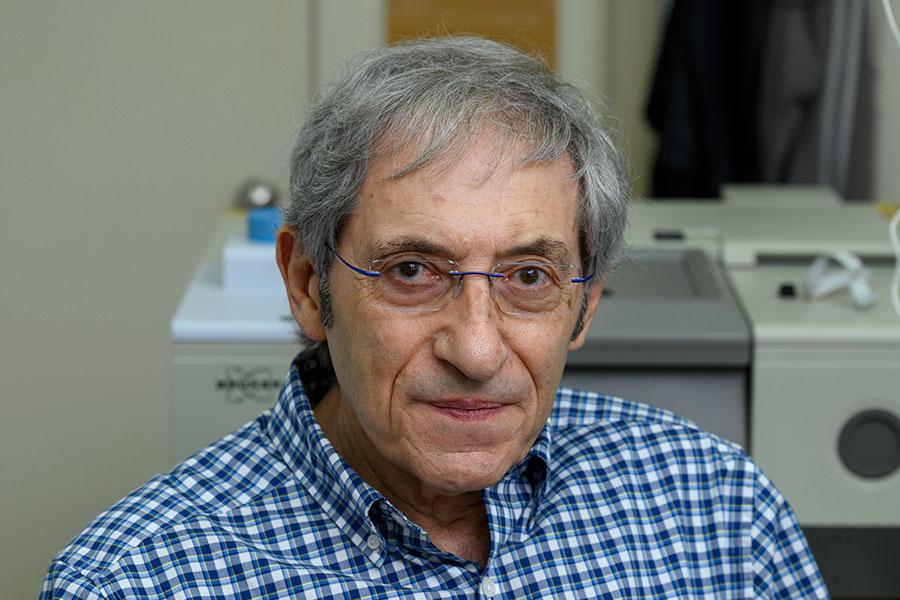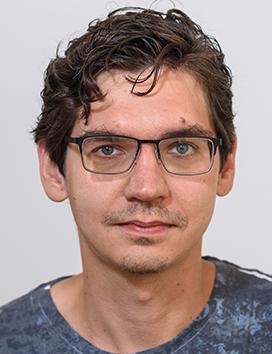
Materials and Nanoscience
Materials and Nanoscience combines principles from chemistry, physics and engineering towards understanding how the structure and composition of solid materials determines their properties and function. This is achieved through development of new synthetic approaches, analytical methods and device engineering. Furthermore, in the nanoscale, the size of solids strongly affects materials properties, thus, the effect of size and dimensionally on material properties is the main premise of nanoscience. Together, these scientific fields are highly important for the development of new technologies ranging from lubrication to electronics.

Prof. Amnon Bar-Shir
The Bar-Shir lab combines strategies in NMR and MRI with tools from synthetic and supramolecular chemistry, nanomaterials and biology for the development of novel approaches to illuminate unexplored processes in both chemistry and biology.

Prof. David Cahen
We research self-repair of optoelectronic materials, with implications for greener resource use, and amazing solid-state electron transport across proteins, with implications for bioelectronics; both are issues that challenge present models and understanding.

Prof. Gary Hodes
We study (together with David Cahen) halide perovskite semiconductors with emphasis on their properties relevant to photovoltaic applications.

Prof. Ernesto Joselevich
We investigate the formation and organization of nanomaterials (including nanowires, nanotubes and 2D materials), their physical properties (structural, mechanical, electronic, optical, optoelectronic, electromechanical, etc.), and their integration into functional systems (computing, solar cells, sensors, etc.).

Prof. Jacob Klein
The Klein group studies surface interactions in soft and biological matter from molecular to macroscopic scales. Current projects include lubrication and biolubrication (and its relation to osteoarthritis), and drug delivery using liposomic carriers.

Prof. Leeor Kronik
The Kronik group studies unique properties of materials using first principles quantum mechanical calculations based mostly on density functional theory. The group develops formalism and methodology and applies it to the prediction/interpretation of novel experiments.

Prof. Meir Lahav
Meir Lahav scientific interests are directed towards the understanding of the physical properties of crystals in general, and their applications for the understanding the mechanism of electrofreezing effect of super cooled water in particular.

Prof. Michal Leskes
Development of advanced solid state NMR spectroscopy methods for materials science applications, with particular focus on elucidating the relation between structure and function in energy storage and conversion materials.

Prof. Igor Lubomirsky
Structural, mechanical, electromechanical, and polar properties of materials. Specific directions: non-classical electrostrictors, piezoelectrics and strongly anelastic solids; influence of surface charge and impurities on ice nucleation; recycling of gold, platinum and rare earth form waste; flue gases desulfurization

Prof. Dan Oron
The group studies the interaction of light and matter at the nanoscale. This includes the optics of nanoscale objects, and the development of methods for optical imaging beyond the diffraction limit.

Dr. Sivan Refaely-Abramson
Our group develops and applies ab initio many-body computational approaches to study excited-state transport and dynamics and complex exciton phenomena in extended functional materials.

Prof. Boris Rybtchinski
We develop robust noncovalent materials (molecular plastics) that are easily fabricated and recycled, enabling a sustainable alternative to conventional pastics. We also work on energy materials that are employed in batteries and solar cells.

Prof. Jacob Sagiv
Current research focuses on a new type of chemical transformations induced by electrons at the interface between two solid materials. Such processes may convert insulating organic monolayers to patterned single-layer conductors exhibiting unusual electrical conduction.

Dr. Sergey Semenov
The Semenov group uses tools of organic and physical chemistry to understand and apply out-of-equilibrium phenomena in chemical systems.

Prof. Mordechai Sheves
Sheves group studies the molecular mechanism of retinal protein function using artificial pigments, model compounds in solution and spectroscopic methods. In addition, the group studies the mechanism of the unusual efficient electronic transport through proteins.

Dr. Ulyana Shimanovich
Our interdisciplinary group is studying the fibrillar self-assembly phenomenon in natural biopolymers, including proteins and protein-based complexes, with an ultimate aim to generate new types of functional materials.

Prof. Reshef Tenne
Our research focuses on the high-temperature synthesis, structural characterization and applications of inorganic nanotubes and fullerene-like nanoparticles from layered compounds (2D-materials), and in particular transition metal dichalcogenides and “misfit” compounds.

Prof. Milko van der Boom
From molecules to materials. We would like to understand how structural complexity, order and chirality emerge in crystals and thin films. Using coordination chemistry, such materials are designed to have fascinating properties.

Prof. Daniel Hanoch Wagner
Research in the Wagner team concentrates on microstructure-mechanics correlations in polymer nanofibers, carbon nanotubes, graphene, nanocomposites, and biological materials.



